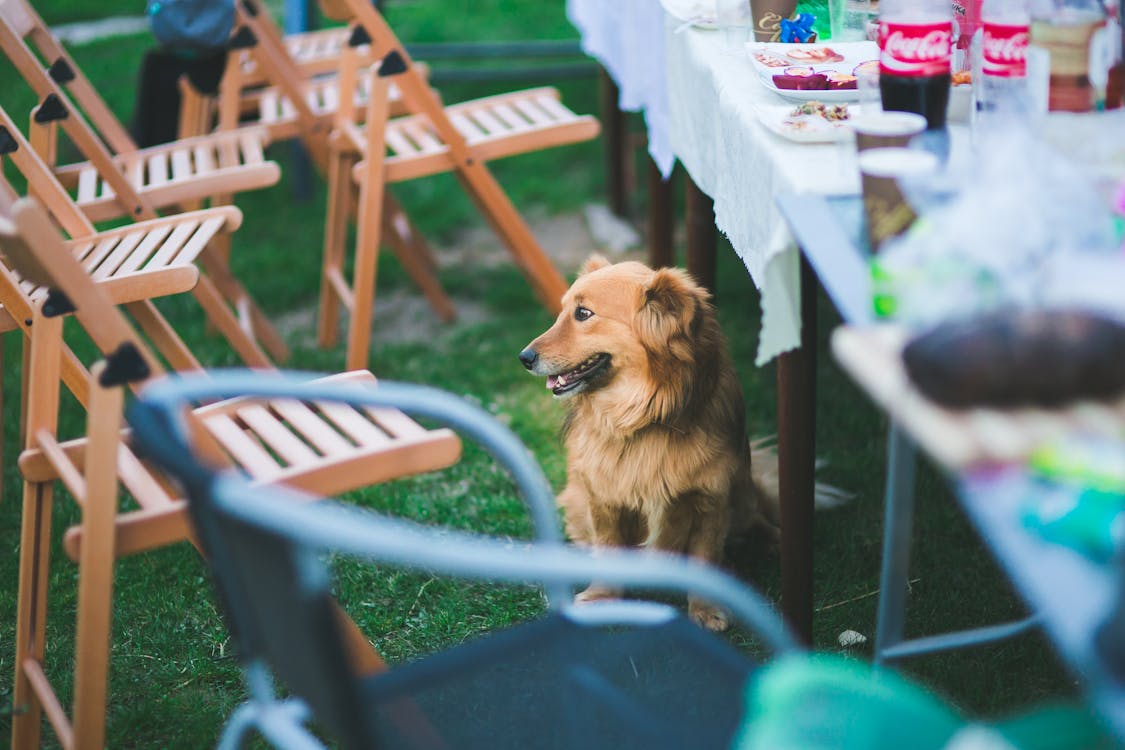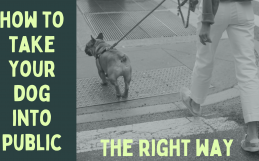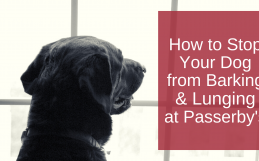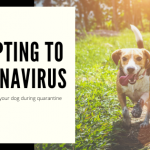How To Keep Your Dog From Stealing Food | Dog Training
Counter Surfing and Preventing Accidents
Recognizing The Problem
Does your dog like stealing food out of your hand or off of your plate? Or maybe they like stealing food from the kiddos because it’s down on their level? What about stealing food off of the counter or even out of the garbage?
Take a deep breath and try not to worry! We have some great tips to help eliminate your pup’s overzealous curiosity and appetite.
When you approach the idea of tackling your dog stealing food or counter surfing, you want to be sure that whatever tactic you use won’t scare, hurt, or traumatize your pup in any way. Of course we want to spook them a little, but just enough for them to think, “Hm, I guess I shouldn’t be doing this.”
Keep In Mind
Every dog is different. Every dog is an individual. Sometimes you have to play around with some things to achieve success. Just because you tried one thing and it didn’t work doesn’t mean your dog is not trainable. You just weren’t speaking a language your dog understood.
Correcting Negative Behavior | Tools For Success
A correction should only be something that gets your dog’s attention or makes something not fun, right? We want them to view this correction experience as a negative reward instead of stealing the food. Obviously having a pleasant reward of, “Wow this is delicious,” is what you want to avoid. If your dog is successful in stealing food: Your Dog – 1 You – 0
We’ve mentioned before that dogs have the IQ of a toddler. If you have kids, or have ever been around kids, you’ll know that they’d never purposefully do something wrong in your presence. But the second your back is turned, they’ll take the gamble. Dogs are very similar. They may never take the chance of stealing food while you’re in the room, but the second you walk out it’s game on!
Counter Surfing | Catching Your Dog In The Act
What is counter surfing? Counter surfing is when there is food left out in a common area, such as on a table or counter, and your dog goes to claim it as his/her own.
I’d almost bet you’ll find a little guilty pleasure in catching your dog in this sneaky act. The “stake out” will make this training session just a bit more fun. Ever caught a thief red-handed? You have now!
OODA Loop | Observe, Orient, Decide, Act
Have you ever had a “Wow, is this actually happening?” moment? That question is one of first steps of a process called the OODA Loop. You’ll have to come to terms that your dog does indeed have the audacity to go behind your back (or maybe right in front of you) and steal food.
The OODA loop is “Observe, Orient, Decide, Act.” How that breaks down is you’re going to observe your dog stealing food. Then you have to orient yourself to understand that this is happening. After, you’ll need to decide what to do and then act upon it.
You’ll want to do all of this before you set your dog up for this test. Maybe writing it down to be sure that you have it clarified in your head can be helpful. Thinking it through, talking it through, writing it down, whatever your method is you’ll want to get a plan before taking corrective action.
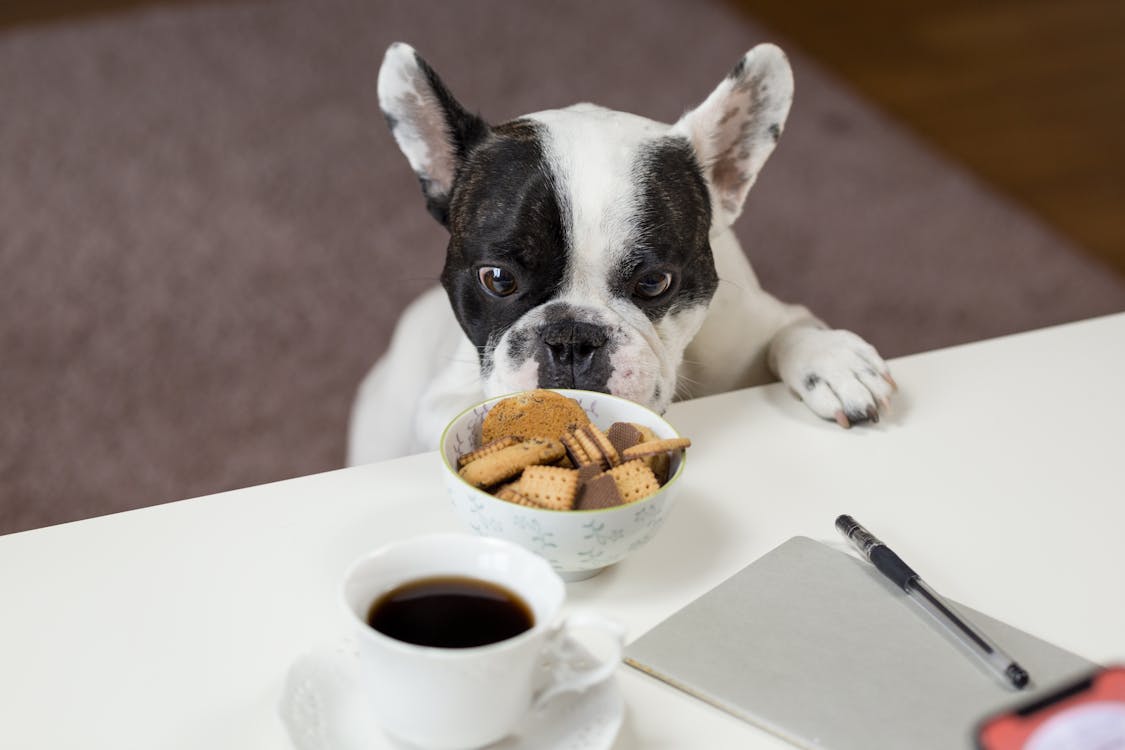 Setting Up
Setting Up
The first thing you’ll need is a video chatting tool. Whether it be your phone, tablet, computer, whatever you’ve got. Make sure you mute yourself because you don’t want them to hear you giggling, breathing, or talking. You need to be silent on their end but you want to be able to hear them on your end.
Place the video device up somewhere that is within range of where you’re going to bait your dog. You’re going to leave food out on purpose to tempt them to make those wrong decisions. Then you’re going to use that camera to catch them red-handed, literally. Go outside of the house or into another room where your dog thinks you’re gone and wait for your plan to unfold.
Now bait. The best bait foods are something very aromatic such as cheeses, broths, meats, etc.
You’ll need food that has a very strong smell. Generally we tell people to choose the smelliest food, maybe even something that is beginning to go bad in the fridge. Anything with a rancid type smell, most dogs are very into. It’ll be the hardest to resist. Also, you’ll want to give them something you don’t mind them stealing or eating. Although the goal is they don’t eat it all, there is still a chance they will.
Hand Towel Trick
Take a hand towel and drape it over your counter so that it’s half on, half off. Place a bowl of water on the front part of the towel towards the end of the counter. Place your food bait, remember something very aromatic such as lunch meat, behind it towards the back of the towel. ***Be sure to use either plastic or metal for this. The bowl or object will probably fall on the floor so to prevent accidents, don’t use glass.***
The goal here is when your dog is in that process of stealing food, they’re going to pull on the hand towel. This will knock the water bowl over onto them or make a loud sound as it splatters on the ground. It won’t hurt them, but it should be a startling enough experience for your dog to tuck tail and be a little terrified. Then you can make your effective correction.
NOTE: If you have a retriever or a hunting dog, this may or may not work for you. These dogs tend to like water, so it may not deter them from stealing food.
Peanut Butter Spoon
You’re going to need two spoons for this one. On the first spoon, place a scoop of peanut butter on it. Position the peanut butter spoon a bit off the counter so that your dog is able to smell it. Use a second spoon and set it across your peanut butter spoon to hold it in place.
The idea here is that your dog is going to smell that peanut butter and want it. Once he/she comes over to try and get it or lick it, they’re going to knock the other spoon off the counter. This is going to be your cue to go and make your effective correction.
Other Tools To Use
You may want to keep other tools handy as you go through this process to spook your pup just a little more.
Air horn: I’m sure we can all attest to being startled by an air horn at least once in our lives. Something loud enough to scare them into never wanting to experience that again.
Long Line: A long line is a very long training leash that comes in various sizes. 15, 30, even up to 50 feet in length. What is great about these is you can be in another room while your dog is roaming the house with this on. This allows you to make effective corrections from farther away by reeling your dog in when they get within 2-3 feet of your bait.
- If you do choose this option, you’ll want to have it on your dog in the house a few days in advance so they completely forget it’s there.
- Be sure that any corrections do not hurt your dog. Remember, we want them to have a negative reaction but not a traumatic experience.

E-Collars | Effective Correction
If your dog is already pre-conditioned to an e-collar, this would be the point where you’d push the stim as effective correction. Usually doing so when your dog is within 2-3 feet of your bait. You can be anywhere within radius and make your correction while tuning into the video you’ve set up.
We highly suggest that you DO NOT use an e-collar on your pup for this training if they have not conditioned with it before. Worse negative behaviors can come from this if not conditioned properly beforehand. You may need to adjust your dial up to whatever stim will make your dog say “Nope, I’m out!” Just keep raising the dial until you see them have that reaction.
With e-collars, it will be a lot easier to not have to get “fancy” with tricks to catch your dog stealing food. You can simply leave out a sheet pan on the counter (not hot of course) with vegetables or maybe some leftover lunch meat after making sandwiches to bait them. Be sure to make it look like this was just left out by accident and you didn’t do it on purpose. Dogs are smart, they’ll know the difference.
Recap
Always be smart about how you choose to go about baiting your dog. It’s important that during training you make this a negative reward for your dog so they don’t continue this behavior, but not a traumatic experience. No matter what method you choose to use, every dog is different. It may take your dog just a few times in a day to correct, or it may take multiple days. Patience is a virtue, right? Be smart, use safe effective correction, and we hope this saves you a dinner or two. 🙂
Still need help? – Post a comment
Leave a comment below if you need clarification on anything or if you have any other questions about your puppy.
Find “How To” Dog Training Videos HERE:

